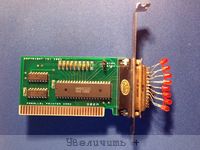modem7
10k Member
I am looking forward to a ROM based diagnostic that is not misleading when it comes to the testing of conventional RAM.
No complaint/criticism. The 16K CRITICAL MEMORY REGION test in the Supersoft ROM diagnostics is many times misleading. One example of many is the screenshot that you pointed to in post #12. Notice that with no RAM fitted, the Supersoft diagnostics do not fail bit 0.Please, explain a bit more? I check the very first 2 KB of RAM very thoroughly (I think). Having a reliable base where I can create a stack I use the same subroutine toy check the rest of the memory. So if you think my test is not good enough or you have other complaints, please tell me! I'm looking forward to ideas that can improve the tool. We will all benefit from it.
I am hoping that you will do a much better job of reporting problems in the first 16K of RAM.

